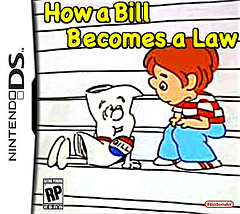Since we talked last week about possible changes to the lien law, I’ve had a few folks ask me to take a step back and discuss the ABCs of current lien law in North Carolina. Ask and ye shall receive………..
Part 1: Lien Law Rights for Contractors, Subcontractors, & Design Professionals
Who can file a lien?
Anyone who furnishes materials or labor to improve real property can file a lien on that property. This includes design professionals who provide services related to improvement of real property, contractors, and subcontractors (down to the 3rd tier).
What types of liens are there in NC?
There are three types of lien claims in North Carolina.
1. The Claim of Lien on Real Property (NC Gen. Stat. §44A-12) is for a person who contracts directly with the owner of the property. This can be a general contractor, a separate independent contractor, or a design professional.
2. The Notice of Claim of Lien upon Funds (NC Gen. Stat. §44A-18 and §44A-19) is available to subcontractors (down to third-tier subcontractors), and allows them to have a lien right to any funds owed to the party that contracted with them in the chain of title. In other words, if the owner still owes money to the general contractor, and the owner receives a Notice of Claim of Lien upon Funds by a subcontractor (and the lawsuit to enforce the lien is thereafter properly filed), the owner cannot pay the general contractor until the subcontractor’s lien is extinguished.
3. The Subrogated Claim of Lien on Real Property (NC Gen. Stat. §44A-23) also provides real property lien rights to the subcontractor, to the extent the party he contracted with has lien rights.
When and Where must a lien be filed?
Lien claims in North Carolina must be filed in the clerk of court where the property is located, within 120 days of the claimant’s last date of furnishing.
What does “perfecting a lawsuit” mean?
A lawsuit must be filed to enforce the lien. This is called “perfecting” the lien, and it must be done within 180 days of a claimant’s last date of furnishing. The lawsuit can be filed in any proper county so long as an appropriate Lis Pendens is also timely filed in the county where the property is located.
What special remedies are available for a lien claim?
If a lien lawsuit is perfected and a judgment rendered, the court can direct the property to be sold to satisfy the lien. Additionally, you can recover attorney fees for the lien lawsuit. Pretty cool, huh?

Crafting a proper lien is like making souffle- no room for error!
In summary:
As you can imagine, liens can be very powerful tools to help ensure recovery of money owed to contractors and subcontractors on a project. The key to exercising your lien rights is to keep watch on the running of the claim period (use of online resources can help with this) and to ensure that the lien is (1) properly drafted; (2) timely served; (3) appropriately filed; (4) perfected with a timely lawsuit. This is not an area where you can make a mistake—liens are subject to strict rules that must be followed to the t. If in doubt about a lien issue, contact a knowledgeable construction law attorney in your jurisdiction.
We’ll continue our discussion with Part 2 (next Thursday), when we discuss how to handle a lien on your property if you are the Owner
Comments about your experience using liens to maximize your chances of recovery? Post below. [And as always, please sign up for an email subscription to the blog if you have not already done so].
—————————
Photo “Soufflé” by stu_spivack via Flickr/Wikimedia/Creative Commons



